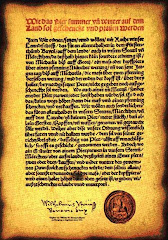
OK, maybe not many people stay awake nights thinking about wine filtration, but this is often times an important part of the winemakers bag of tricks to produce wines that are clear and appealing as well as sterile and stable. We’re going to look at a couple of aspects of this technique and maybe revisit for a more in-depth look later on.
To start, let me say that not all wines are filtered. Some producers make a point of stating this on the wine label. What does this mean? This means that the wine is not filtered. DUH! It does not guarantee quality or a level of quality. It means what it says: This wine is not filtered. Period. There are some winemakers who believe that a wine should never be filtered as all of the particulate components of a wine add flavor; filtering a wine reduces overall flavor and complexity.
There is also fining-this is a process whereby, traditionally, some material is allowed to filter through the wine to remove certain particles and compounds that may cause a wine to cloud. Some of the most common fining materials are: bentonite,a type of clay from Wyoming; kaolin, another clay; silica and activated charcoal. These are inorganic agents.
Organic agents include albumin, casein, gelatin, and rarely, isinglas from fish bladders. These agents work largely by forming compounds with solids in the wine, called colloidal particles, and add weight to them so they settle to the bottom of the cask.
Much of this settling action happens if a young wine, fully fermented, is left to settle on its own time. But time is money and fining gets the wine hopping along its journey to your table faster than waiting for it to settle of its own accord.
Filtration can be performed almost anywhere along the wine making process: wine is often filtered after fermentation when the wine is racked, transferred from one barrel to another, to start the aging and settling process. This is a coarse type of filtration and removes only the largest of the wine solids.
Modern filtration is either depth filtration or surface (AKA absolute) filtration. Depth filtration has the wine pass through a reasonably thick filtering membrane or agent. Solids get trapped somewhere in the channels of the filter and do not pass go and do not collect $200. Bummer.
As the name suggests, absolute, or surface, filtration removes everything if the filter holes are small enough. These holes are on the surface of the filter and need to be removed when clogged. This type of filtration can have openings so small that even bacteria and yeasts are filtered, hence, absolute filtration.
There are myriad variations on filtering agents and filtering machines, so we can come back to this topic if you would like. Let me know.
So next time you hoist a goblet of vino, hold it up to the light and see just how beautifully clear this wonderful beverage is; and realize that it takes lots of skill and experience and love to produce this product.































